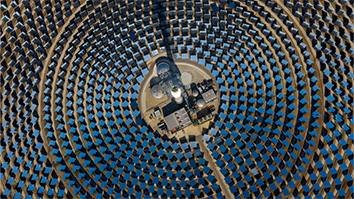Citation
Kalogerakis, K. S., Marschall, J., Oza, A. U., Engel, P. A., Meharchand, R. T., & Wong, M. H. (2008). The coating hypothesis for ammonia ice particles in Jupiter: Laboratory experiments and optical modeling. Icarus, 196(1), 202-215.
Abstract
We report laboratory experiments and modeling calculations investigating the effect of a hydrocarbon coating on ammonia ice spectral signatures. Observational evidence and thermochemical models indicate an abundance of ammonia ice clouds in Jupiter’s atmosphere. However, spectrally identifiable ammonia ice clouds are found covering less than 1% of Jupiter’s atmosphere, notably in areas of strong vertical transport, indicating a short lifetime for the signature of ammonia absorption on condensed ammonia particles [Baines, K.H., Carlson, R.W., Kamp, L.W., 2002. Icarus 159, 74–94]. Current literature has suggested coating of ammonia ice particles by a hydrocarbon haze as a possible explanation for this paradox. The work presented here supports the inference of a coating effect that can alter or suppress ammonia absorption features. In the experiments, thin films of ammonia ices are deposited in a cryogenic apparatus, coated with hydrocarbons, and characterized by reflection-absorption infrared spectroscopy. We have observed the effects on the ammonia ice absorption features near 3 and 9 μm with coverage by thin layers of hydrocarbons. Modeling calculations of these multilayer thin films assist in the interpretation of the experimental results and reveal the important role of optical interference in altering the aforementioned ammonia spectral features. Mie and T-matrix scattering calculations demonstrate analogous effects for ammonia ice particles and investigate the relative effects of ammonia ice particle size, shape, and coating layer thickness on the ice particle spectral signatures.


